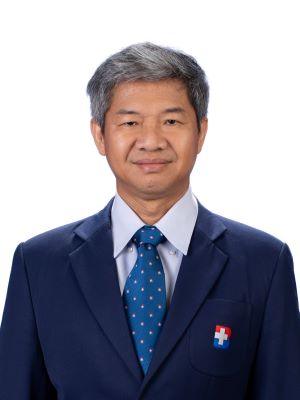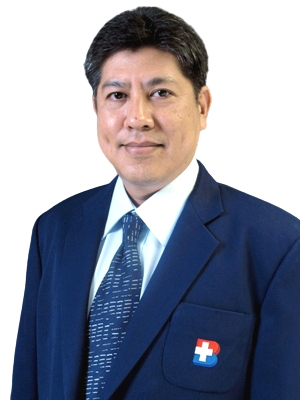Golfers and tennis players might have experienced symptoms such as pain around the elbow near the protruding bone on either the outside or inside of the elbow after practicing golf intensively, and sometimes hitting too hard or hitting the ground, causing immediate elbow pain. The pain increases when playing golf or tennis, sometimes waking up in the morning unable to flick the wrist due to severe elbow pain and feeling like the arm is weak, even to the point of not being able to lift a coffee cup or open a car door, or sometimes twisting a cloth is very painful. These symptoms indicate muscle tendon inflammation attached to the elbow bone, known as elbow tendonitis, which is common in golfers and tennis players, especially those over the age of 30.
Muscle Tendon Inflammation
Elbow tendonitis, commonly known as Tennis Elbow or Golfer’s Elbow, is frequently found in people who use their wrists and elbows extensively, whether in heavy work or light work but involving repetitive motion and constant wrist flicking and elbow stretching, such as sweeping, wiping, painting, drumming, hairstyling, using scissors to cut branches, and particularly in playing sports such as golf and tennis.
Causes of Muscle Tendon Inflammation
The most significant cause of tendonitis is tendon injury due to stretching or waving, or too much repetitive use (Overuse Injury) leading to cellular level damage to the muscle tendons attaching around the elbow, or in severe cases, tearing of the muscle tendons. However, these symptoms may also occur in chronic joint inflammation, such as in patients with rheumatoid arthritis.
Symptoms of Muscle Tendon Inflammation
Patients will have pain around the elbow bone where the muscle tendons are inflamed, especially when tensing the muscles to flick the wrist up or down, and there will be a tender spot in the same area when tensing the muscles against resistance, resulting in increased pain. The severity of the disease varies, from mild pain to severe pain that prohibits the use of the arm.Tennis Elbow (Tennis Elbow) pain occurs on the outside of the elbow when moving or rotating the elbow, when flicking the wrist up strongly, or when gripping objects in hand, such as the motion of hitting a tennis backhand, due to inflammation of the muscle tendons around the outer elbow bone.
Outside Elbow Pain is found in tennis players who hit a backhand flicking the wrist strongly, and in golfers whose swing might not be correct, resulting in hitting the ground or over-practicing, often occurring when there is no proper warm-up or stretching of the muscle tendons before practice or play. Injury or inflammation on the outer elbow is more common than on the inside because the muscle tendons that originate at the protruding bone on the outer elbow are not very strong in most people and have limited flexibility.
Golfer’s Elbow (Golfer’s Elbow) is characterized by pain on the inner side of the elbow when bending the elbow inward and flicking the wrist down, like the motion of swinging a golf club strongly, due to inflammation of the muscle tendons around the inner elbow bone.
Inner Elbow Pain is often seen in skilled golfers who can hit far due to not having problems with swing motion, but issues arise from overusing or using the muscles too frequently. It is found frequently on the inner right elbow (for right-handed golfers).
Treating Muscle Tendon Inflammation
After playing or using the affected part, if there is immediate increased pain, you should use treatment principles by resting (Rest), applying cold (Ice), using a compression bandage to prevent swelling (Compression), and elevating the elbow while sitting or lying down using a pillow (Elevation). After passing the acute stage, when the pain has reduced and swelling has subsided, gradually start exercising the muscle. In some cases where the pain is severe, steroid injections may be needed to reduce inflammation at the site, and in cases of repeated injury or chronic conditions, surgery might be required.
To cure, it is necessary to rest, take anti-inflammatory medications, and avoid additional injuries during treatment. Many athletes need to train or compete even before fully recovering. If the condition isn’t severe, wearing an elbow strap can help prevent overstraining the inflamed muscle tendons, reducing the chances of re-injury.
Preventing Muscle Tendon Inflammation
Rehabilitation to restore normal function includes exercising and stretching the forearm muscles to strengthen them before returning to play golf or tennis, or resuming work. If muscles are not rehabilitated or strengthened sufficiently, there is an easy risk of re-injury and chronic injury symptoms.
Exercises for Stretching the Muscles
Recommendations for golfers and tennis players
Always stretch the wrists and elbows fully before practice or play.
Regularly exercise the arm muscles every day, such as gently squeezing a hand spring or a soft ball, using light weights to help the muscles contract and extend, and rotating the wrists to increase strength.
Exercise should start gradually, increasing slowly and consistently. If any unusual symptoms occur during exercise, stop and rest.







